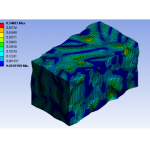AnalySwift awarded Army contract to lead multi-institute project on drones
Partnering with Penn State, University of Texas Arlington, and University of Tennessee, Knoxville, the group is developing a design framework for morphing unmanned aerial systems (UAS)
UNIVERSITY PARK, Pa. — Unlike birds and insects, most unmanned air vehicles (UAS) cannot adapt their structure to optimally perform multi-stage mission needs such as collapsing, dashing and loitering. While some next-generation aerial systems can move with dexterity and morph to adapt to the mission at hand, such flexibility is limited by how the structures and skins impact integrity, stability, flight dynamics and control. To help address this challenge, the U.S. Army has awarded a $179,489 grant to a multi-institute collaboration, led by Penn State and AnalySwift, to develop a tool to inform the required material properties of the morphing structure. More specifically, the team aims to improve the coupling between the morphing mechanism and the vehicle structure.
Daning Huang, assistant professor of aerospace engineering, will lead Penn State’s efforts and serve as principal investigator on the project. Research partners include the University of Tennessee, Knoxville, and the University of Texas Arlington.
With the project, titled “Rapid Aeroservoelastic Design Framework for Morphing Unmanned Aerial Systems (RADMUAS),” researchers aim to develop a computational design tool to rapidly assess the fluid-structural interactions at the vehicle level that can impact aerodynamic and flight dynamic characteristics.
Industry partner AnalySwift, which develops multiphysics modeling among other tools, proposed RADMUAS to assess morphing technologies accurately and computationally with the goal of solving aeroservoelastic — how the dynamics of air flow, structures, actuators and flight interact — challenges. The framework employs a novel fidelity decomposition approach, which preserves the key physical processes in morphing dynamics and aeroservoelastic optimization while reducing computational costs.
“Such a tool can help Army engineers to develop high-performance morphing unmanned aerial vehicles that can adapt their structure to respond optimally to soldier need and, ultimately, facilitate the success of Army operations,” Huang said.
In addition to military use, the project has potential commercial applications, according to Allan Wood, president and chief executive officer of AnalySwift.
“We are excited to address these critical challenges facing morphing UAS with Penn State and Dr. Huang, who brings a wealth of expertise in this area,” Wood said. “This is an ambitious project, and the topic we’re addressing is an area of great interest to the Army and industry. The tool has numerous commercial applications facilitating the design of morphing unmanned aerial vehicles used in aircraft maintenance, repair and operations, agriculture, energy, construction, mining, search and rescue, disaster relief, inspections, surveying, law enforcement, conservation, forest fire detection and monitoring, and plume tracking.”
The research team includes Wenbin Yu, chief technology officer, AnalySwift; Xin Liu, assistant professor, University of Texas Arlington; and Zhenbo Wang, assistant professor, University of Tennessee, Knoxville.
The Penn State press release is available here.
MEDIA CONTACTS:
Penn State College of Engineering Media Relations
Ashley WennersHerron
AnalySwift
Allan Wood
info@analyswift.com
www.analyswift.com











